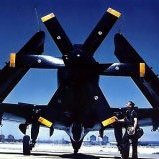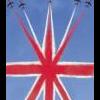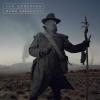-
Posts
1,305 -
Joined
-
Last visited
About SafetyDad

- Birthday 08/05/1960
Profile Information
-
Gender
Male
-
Location
Derwentside, NE England
Recent Profile Visitors
2,662 profile views
SafetyDad's Achievements

Very Obsessed Member (5/9)
1.8k
Reputation
-

The Best Way to get a 1/32 Spitfire Mk Vc Trop with a Vokes filter?
SafetyDad replied to JohnT's topic in Aircraft WWII
Somewhat tongue in cheek - has this thread taken us all into a new modelling dimension? Not only rivet counting, but now rivet measuring? SD -

luftwaffe airfield equipment... what is this thing?
SafetyDad replied to elger's topic in Aircraft WWII
+1 for your suggestion. I've had a quick peek at my references and I'm none the wiser, but your ideas make sense to me SD -
Without a definitive photo of this aircraft we're left with the evidence we have, namely the details of the production batch PB632 was a part of. Wingleader suggests the cupola was present on this aircraft, at least on delivery, as this was a feature of this production batch. Of course it may have been replaced PDQ once she reached her operational squadron. At the very least this cupola must have added to the noise, draft, and general discomfort of the bomb aimer's job (must also have significantly added to the cold), and that's without trying to peer through it. WL emphasise the unpopularity of this cupola at squadron level. I wonder if the pic at the head of this thread covers just enough of the nose underside to allow us to say that it had been replaced at the time of photographing? Looking carefully at the other two pics showing the cupola, and the distance between the underside of the bomb aimer's blister and the cupola, shouldn't the very front of the curved perspex just be visible if it was still fitted? SD
-
OK @PatG, here we go I wasn't aware of this fitting until I read the Wingleader books - this cupola was open to the rear (!), and allowed the bomb aimer to watch the fall of munitions and the target whilst upside down. Unsurprisingly perhaps, this was not an overwhelmingly popular feature as most bomb aimers experienced air sickness whilst undertaking these contortions. Many units deleted it, replacing it with a flat, glazed, oval panel. Here's another: Both pics from here - I've just noticed the cover artwork illustrates this too. As usual, pics are intentionally cropped to discourage further replication, and are posted in accordance with UK Copyright Law solely for the purpose of discussion/research. If you are interested in the Lancaster, or any of the other types that Wingleader have covered in their photo series, I would urge you to acquire any relevant issues. They are outstanding in their detail coverage. HTH SD
-
A tip of my hat to @Tigerausfb for serial number clarification and here we go PA964-PD139. 755 Lancasters in this production batch, manufactured between May 1944 and March 1945, a mix of Mark I and Mark IIIs. Sadly I can't locate any pictures of your chosen airframe. I can offer below some idea about how she might have looked, but this is from a modelling perspective so may not be what you are after for relatives. Unfortunately with this batch, as with some others, it straddles a number of significant changes in Lancaster appearance. Without a definitive photo, it's not possible to be certain about some of the external features, as seen below. So, as far as I can tell, the salient points No fuselage windows H2S carried, so under-fuselage blister, and also No port cabin window blister (confirmed by your picture above) Rear view cupola for bomb-aimer (not visible on your pic, but a feature of many/most of this batch Large bomb aimers blister (clearly shown) Many aircraft in this batch fitted with Rebecca landing aid aerials, but your picture shows NOT fitted here Late pitot tube (visible under Luftwaffe Lulu ) Props, ah here's a conundrum. Paddle props for some later aircraft. PB383 has needle props, as has PB407, PB410 and PB509. PB810 and PB935 have paddle props. This happens in other production batches too. On the balance of probabilities, I think paddle props but that's a guess. Astrodome is also not easy to pin down. PB736 has the larger taller astrodome, as does 935. Wingleader caption PB410 as having the larger astrodome, but it looks like the standard version to me? Wingleader also have a pic of the Lancaster assembly line around this time, with fuselages fitted with both standard and tall astrodomes fitted, but apparently at random across the sequence - there is no neat change at a specific point with a given fuselage number,, rather the newer taller fittings are 'sprinkled' into the run. Z equipment rings on the front of the bomb aimers blister (just visible in your pic) Monica was fitted to Lancasters in Spring 1944 - possibly Monica III or Visual Monica (which had an arrowhead aerial under the tail turret, plus receiving aerials mounted in the tail fin). It's just possible, given the name of your aircraft, that she was fitted with Monica V, otherwise known as Lulu. This had a double arrowhead tail aerial, plus wing mounted receiving aerials. This is pure speculation on my part, as apparently only 300 sets of this device were produced, but might it be the case given the name? The standard RAF callsign for the aircraft letter 'L' was Love, with Leather or London also used. Lulu may not necessarily be connected with her aircraft letter? Or it might? HTH SD
-
I would point you to the recent Wingleader publications on the Lancaster. They have surveyed the aircraft by production batch, mapping the airframe changes and improvements that were implemented over time, I'm away from my references at the moment, but will see what I can find later today. Even if there is no photo of PS632, there will be details on that production match that will guide you. HTH SD
-
From the Wingleader Photo Archive 5 - Avro Lancaster Early Production Batches 1941-43. 5th Production batch W4761 - W5012. As delivered: Trailing aerial fairing now under the port wing leading edge Fairings for windscreen de-icers introduced with this batch As @Work In Progress says above, originally with standard bomb bay doors Interior framing of turrets in aluminium finish, not yet painted black 'Needle' bladed props Port side cabin blister (Starboard side not visible in pics I have but likely present based on pics of other airframes in this batch) Fuselage windows present Probably original tailwheel - antishimmy grooved wheel not introduced until Mid-1943 Wheelhubs in black, rather than aluminium IFF aerial mounted on fuselage underside under rear door No TR9 radio aerial fitting under portside canopy Original shallow bomb aimers blister With a Lancaster of this length of operational experience, it's inevitable that changes would have been made throughout her life so it's possibly prudent to select a time in her service and model accordingly. Props, aerials and fittings could easily be updated and changed. HTH SD
-
OK, here we go. I found a B-25 marked up as an RAF machine that I thought might appeal to you. Profile as the author sees it and caption A summary of B-25s in the theatre Hence the use of MA956 as a courier aircraft. There are other pics of B-25s of various marks, serving with RAF, RAAF, US and Dutch airforces. HTH SD Source is Thomas G J (1999) Eyes for the Phoenix - Allied Aerial Photo-Reconnaissance Operations South-East Asia 1941 - 1945 Hikoki Pictures and text posted for the purpose of discussion/research.
-
HI Ley Are you after a particular airframe of airforce markings? I can have a sift through my copy for pics for you SD
-
I found these Source and some expired eBay auctions show some helpful detail And finally this Do217N-2 found abandoned at Straubing in 1945. According to my references this machine was eventually attached to a Wekusta unit for weather forecasting! This was to be my chosen scheme for my Koster conversion SD
-
Hi Bruno I've just found this thread - I'm very impressed with your careful and precise work. Excellent! I have a stalled Koster Do217N on the SOD, but I sorted through a fair few references for it some time ago. I'll have a look for pics for you and get back if I find anything helpful. SD
-
Excellent build and post Michael! I have a passing interest in these aircraft, but you've really done the work. Just to satisfy my curiousity - do you think the wing undersurfaces are NMF? SD
-
Your question inevitably will take us beyond wheels and into the areas of accuracy and fit of other parts as well. I would suggest that you research your intended product carefully before committing to purchase. There are often detailed reviews, with photos, here and on other on-line discussion boards . Reviewers are usually knowledgeable, and they're aware of fit and compatibility issues. These can save a whole lot of pain and angst, or give you the incentive to order these parts immediately and in quantity before they are OOP . SD
-
@DrumBum you might want to change the title of this post to guide contributors. Something like ‘Yoxford Boys’ P-51B/C camouflage colours’









